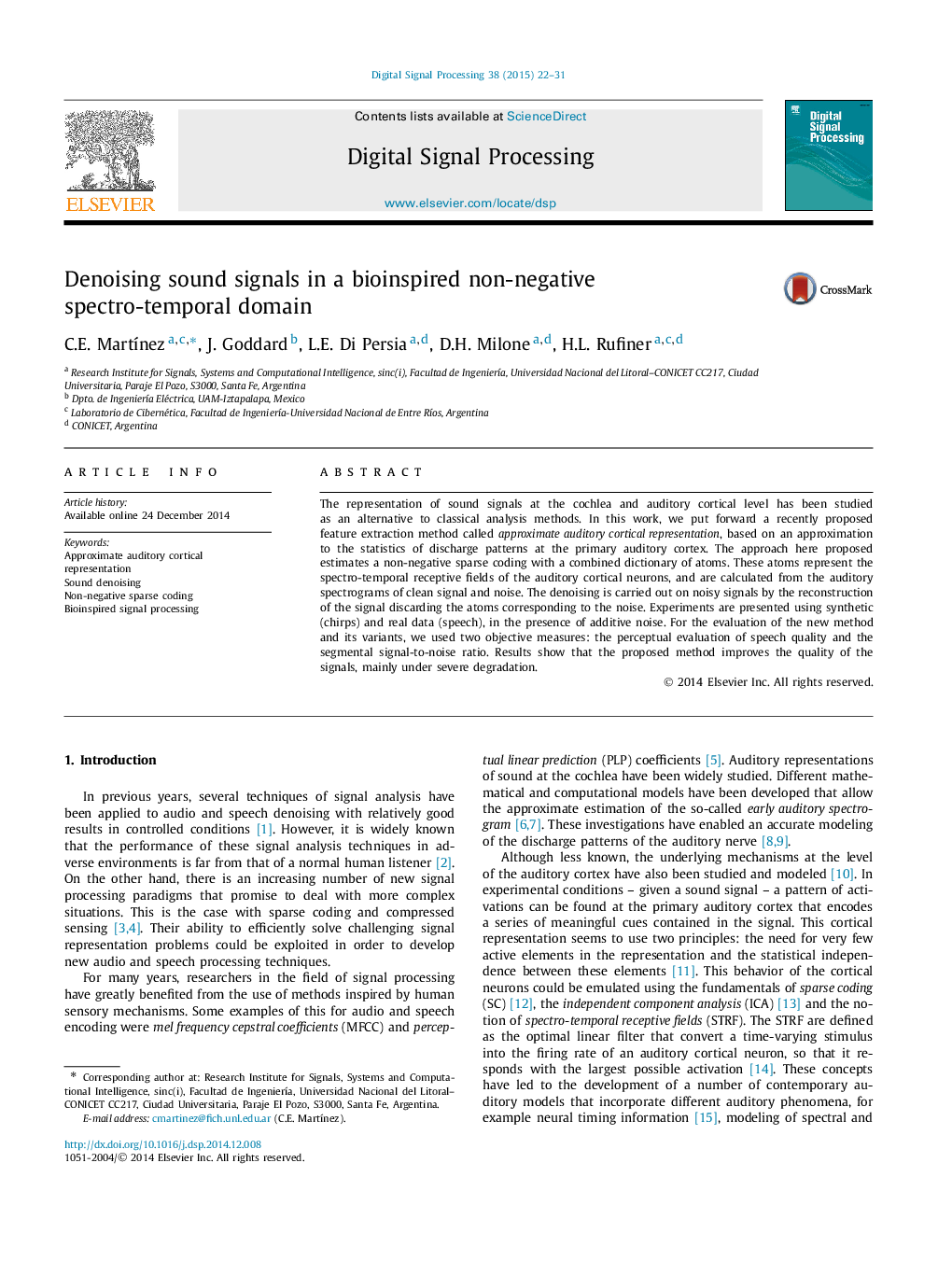| کد مقاله | کد نشریه | سال انتشار | مقاله انگلیسی | نسخه تمام متن |
|---|---|---|---|---|
| 559517 | 1451742 | 2015 | 10 صفحه PDF | دانلود رایگان |
• We address the problem of signal representation in the broad field of signal denoising.
• A biologically-inspired method is here adapted to a non-negative matrix factorization framework.
• A sparse coding is estimated of a combined dictionary from noisy and clean signals.
• A main denoising algorithm along its variants are presented.
• The method improves the quality of the signals, mainly under severe degradation.
The representation of sound signals at the cochlea and auditory cortical level has been studied as an alternative to classical analysis methods. In this work, we put forward a recently proposed feature extraction method called approximate auditory cortical representation, based on an approximation to the statistics of discharge patterns at the primary auditory cortex. The approach here proposed estimates a non-negative sparse coding with a combined dictionary of atoms. These atoms represent the spectro-temporal receptive fields of the auditory cortical neurons, and are calculated from the auditory spectrograms of clean signal and noise. The denoising is carried out on noisy signals by the reconstruction of the signal discarding the atoms corresponding to the noise. Experiments are presented using synthetic (chirps) and real data (speech), in the presence of additive noise. For the evaluation of the new method and its variants, we used two objective measures: the perceptual evaluation of speech quality and the segmental signal-to-noise ratio. Results show that the proposed method improves the quality of the signals, mainly under severe degradation.
Journal: Digital Signal Processing - Volume 38, March 2015, Pages 22–31
